With the deprecation of third-party cookies, Google has struggled to find a way to preserve privacy while delivering relevant ads – a win-win solution for advertisers and consumers alike.
Its initial solution was FLoC, but the Topics API will now take over as the new star of cookie-free targeting.
Article translated and interpreted from “Google Replaces FLoC with Topics API: What You Need to Know” by Susie Marino
The TL;DR
- FLoC is being replaced by the Topics API as a better solution for interest-based but privacy-friendly advertising.
- Instead of assigning cohorts to users, it will assign them subjects, which they can view and modify.
- Advertisers see this as a compromise, but are concerned about the diversity of subjects.
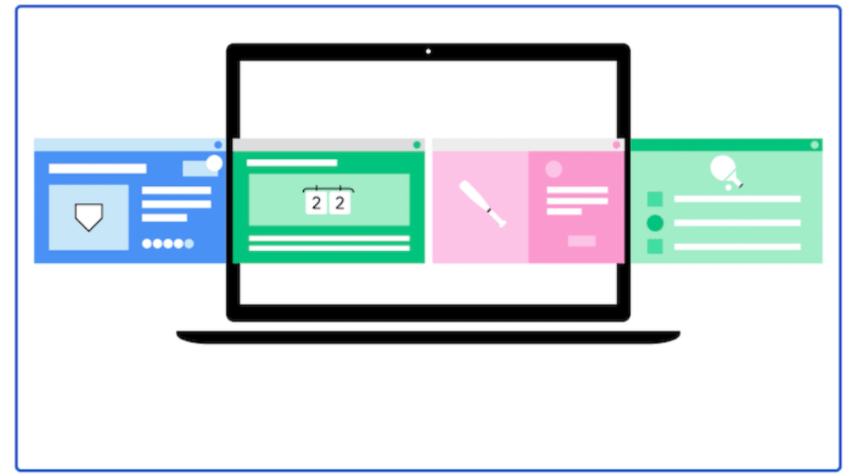
What is interest-based advertising?
To understand what’s going on, you first need to know what interest-based advertising (IBA) is.
Interest-based advertising consists of displaying ads to a user based on his or her interests, which are deduced from the sites he or she visits.
This enables advertisers to reach the right audiences and users to see relevant ads.
However, this information is often collected by third-party cookies which, as we all know, do not respect privacy and are on the way out.
What is FLoC?
FLoC (Federated Learning of Cohorts) was Google’s initial solution for interest-based targeting without third-party cookies.
We’ll give you all the details of FLoC here, but basically it involved dividing users into cohorts each week based on their browsing history, then sending these anonymous cohorts back to websites for advertising purposes.
But FLoC had its shortcomings, such as a lack of clarity and transparency from the user’s point of view, and several serious security risks.
The Topics API aims to eliminate most of these problems.
What is the Topics API?
On January 25, 2022, Google announced that FLoC was being replaced by Topics API, which is a better solution for interest-based advertising, based on information and community feedback from previous FLoC trials.
The main difference between FLoC and Topics API is that instead of assigning users cohort IDs every week, it will assign them three to five possible topics of interest every three weeks, based on their browsing history.
The API will then communicate three of these topics to participating sites, which can then use them for advertising purposes.
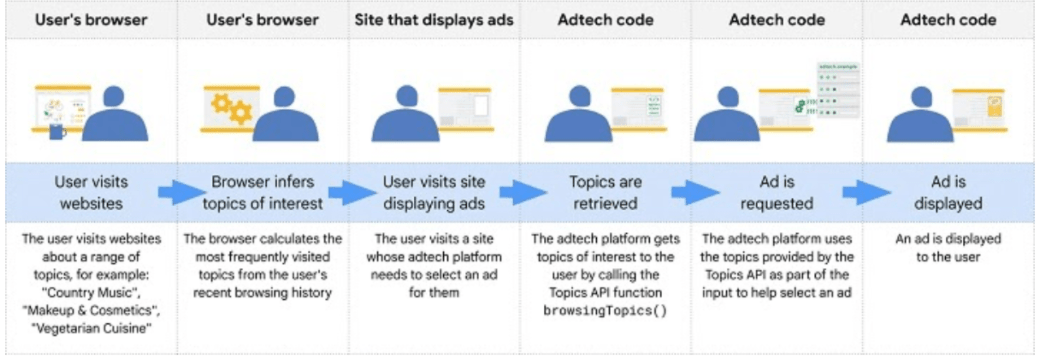
For example, a site dealing with skiing and snowboarding would be placed in the “Sports” category.
Subjects are defined to exclude potentially sensitive categories (race, sexual orientation, religion, etc.).
There are currently 350 themes, but this number is set to rise to hundreds, if not thousands.
Sites can refuse to be assigned a theme, and users will be able to view the themes assigned to them.

What the PPC community has to say about the Topics API
The Topics API can definitely be a challenge to digest, and PPC experts already have plenty to say.
Here are a few comments gathered from the ppc community:
Encouraging, but more information is still needed
Aaron Levy, Head of Paid Search at Tinuiti, praises Google for trying to find a happy compromise between user and advertiser, even if the platform didn’t give us all the answers.
TLDR: There’s still a lot of vagueness out there, but it’s encouraging to see that Google is working with wider industry feedback and working towards stability.
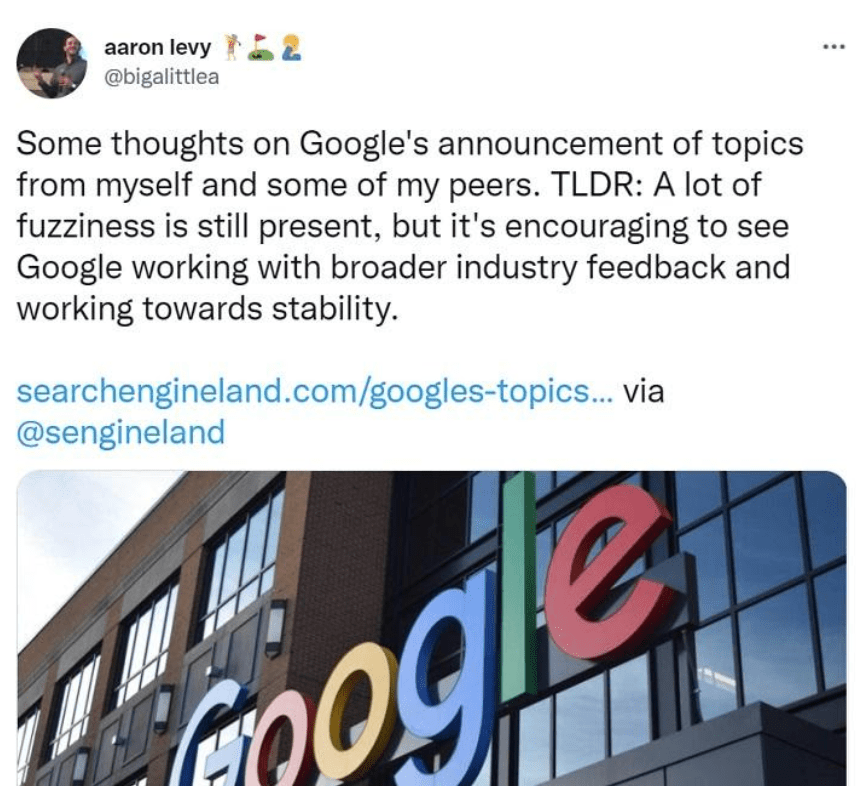
In the Search Engine Land article, Aaron continues:
It’s strange to call it an advantage, but I consider anything launched with a higher probability of stability and a lower probability of mass opt-out to be a win.
Indeed, there’s no way around the extinction of third-party cookies. At this stage, the PPC community will take what it can get.
No great surprise
A more neutral sentiment here, by Simon Harris, Trade Desk Director at DPG Media, is not surprised, given the history of these efforts, and finds it :
A common-sense approach
Here’s what he says in his Tweets:
People were talking about this approach (a long time ago, before the OG), so much so that I initially thought, wrongly, that this was the path Google would take. I assumed they wouldn’t, because it would have been seen as anti-competitive for anyone who could make sense and money out of a cohort ID and Bidstream data.
It’s interesting to see that Google has come full circle, since the pre-canalized topics were discussed before the first OG. From the consumer’s point of view, it’s good to see that they’re taking a common-sense approach here.
Google was already talking about it back in August, and the rumors have been building up for weeks. So this isn’t really a surprise.
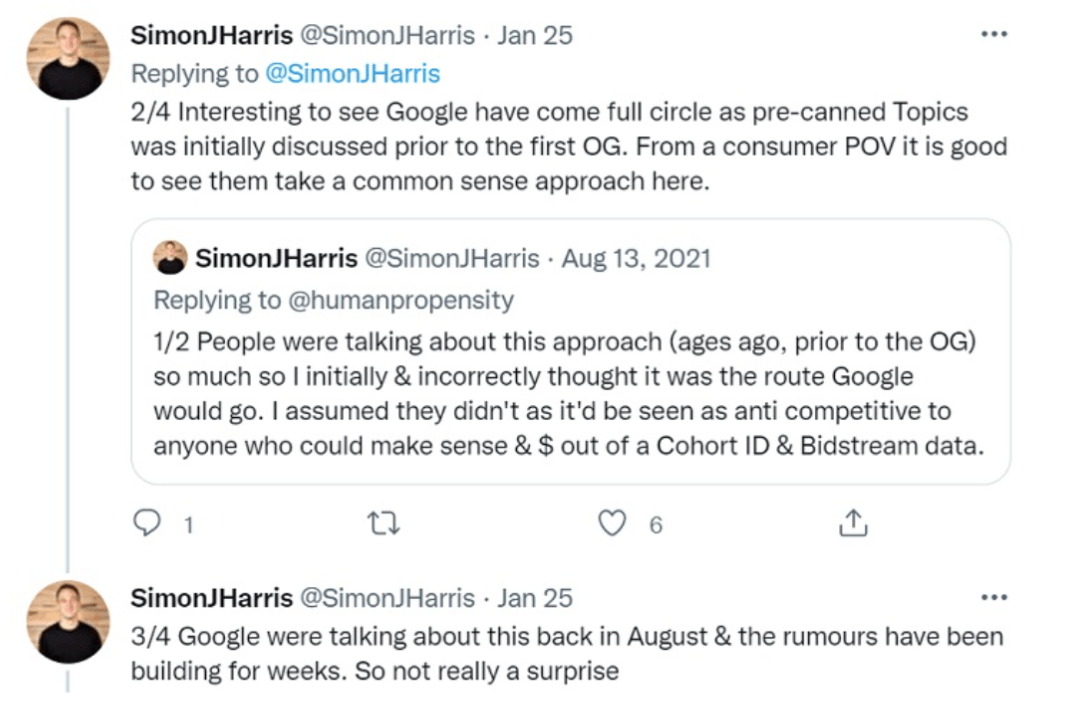
This is in line with Aaron’s earlier comment that an intermediate solution had to be found.
FLoC was already notorious for its problems, so it was only a matter of time before Google published another proposal, like Topics.
Concerns about the accuracy of subject targeting
Many advertisers feel that the list of topics is not nearly as precise as they would like.
To be fair, Google could only create a limited number of topics before its list became too specific.
If advertisers want more precise topic category choices, this could lead to Google getting deeper into the trap of catering to the needs of each niche market.
That said, Jayesh Easwaramony, founder of Spectra Global, says targeting will get worse, and gives this example.
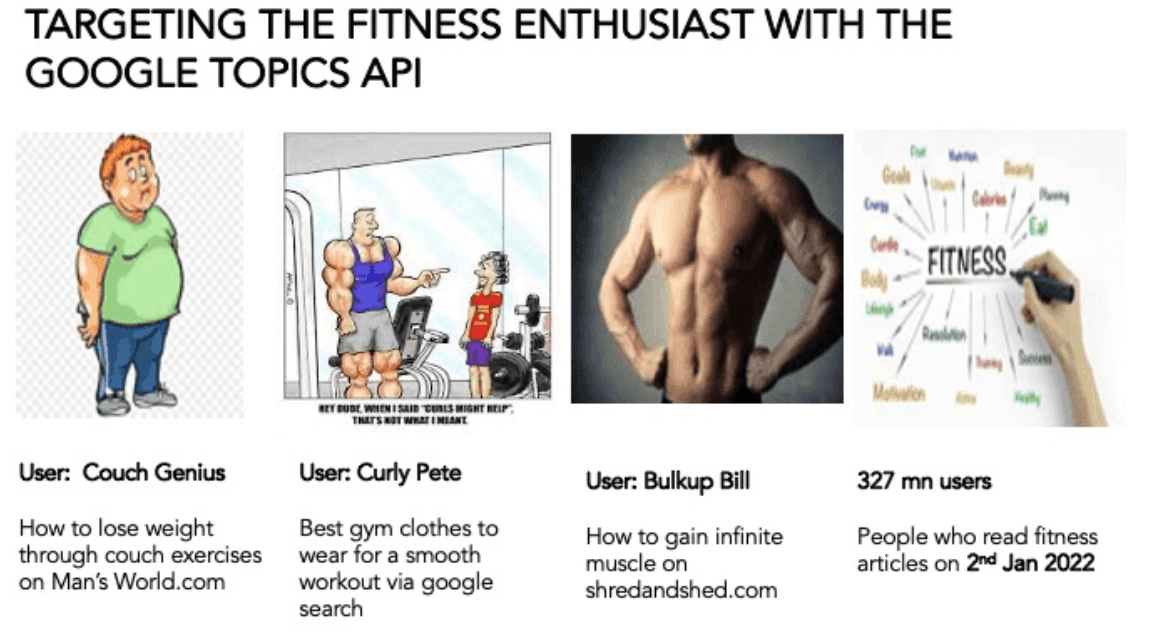
While it’s fun to laugh at this comic strip that shows the breadth of the fitness subject category, the concern is valid.
A person browsing a fitness website on New Year’s Day is completely different from a person working as a personal trainer.
Chances are, they are also customers of various businesses.
What you can do
Wondering what all this means for your own advertising strategy?
Try the following steps:
- Collect your own data. There are many ways to collect first-party data and even zero-party data (this is number four on our list of 2022 marketing trends).
- Stay tuned for updates to the Topics API. Google has a page dedicated to the Privacy Sandbox, and we’ll keep you posted too!
Google Topics API: TBD
The value of the Topics project is in the making, but I’m not sure it’s the future. There are essentially three points to remember here:
Are we surprised? No.
Are the topics too broad? Yes.
Do we have any choice but to try it out? No.
While the Topics initiative is necessary on Google’s part, it’s still too early to tell how beneficial it will be for advertisers.
When will the Topics API be launched?
In its announcement, Google said it would be launching a trial version of Topics and User Controls in Chrome “soon”, so that “developers and the advertising industry can try it out”.
The final design of the user controls and other technical aspects of Topics’ operation will be decided on the basis of your feedback and what we learn from the trial.
How many topics will there be?
Google currently estimates that there will be around 350 to start with, but expects the final number of subjects to reach a few hundred or thousands.
Can users see what their subjects are?
Yes, you’ll have total control over this feature, as you’ll be able to view topics, delete those you don’t like and even disable them altogether.
Chrome also shares a complete list of available topics.
What are “participating websites”?
These are websites that end up using the rubric API, i.e. that authorize Google to assign them a rubric.
Sites can refuse to be assigned a theme, but they won’t receive theme data either.
What data are used to determine the headings?
In fact, Google assigns themes to websites, and assigns you a theme based on the sites you visit most often.
Google writes: “The calculation of the most frequent topics is carried out entirely within the browser, without sharing data with external servers. The resulting topics may be sent to servers anonymously for sensitivity and abuse analysis purposes.”



